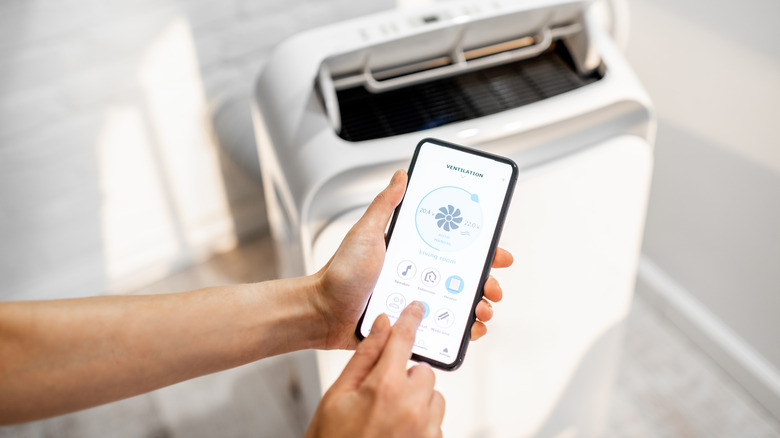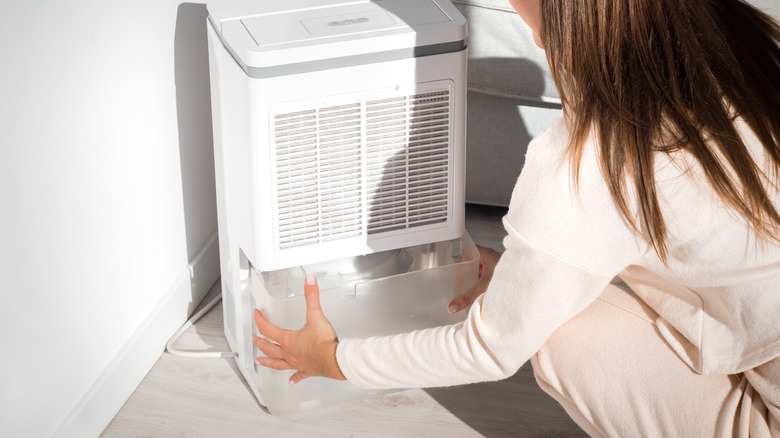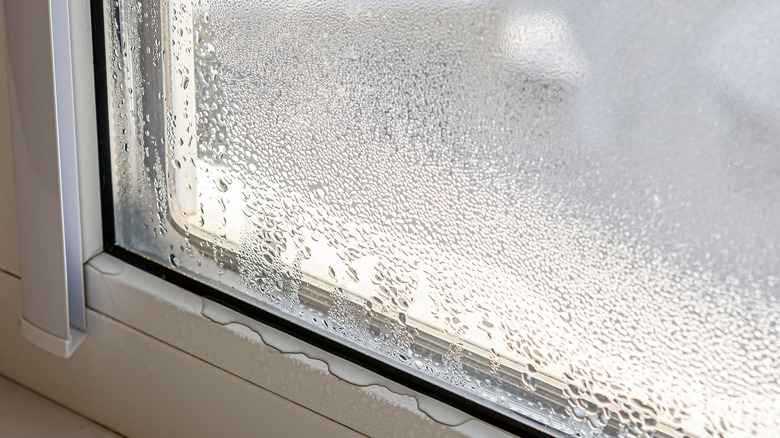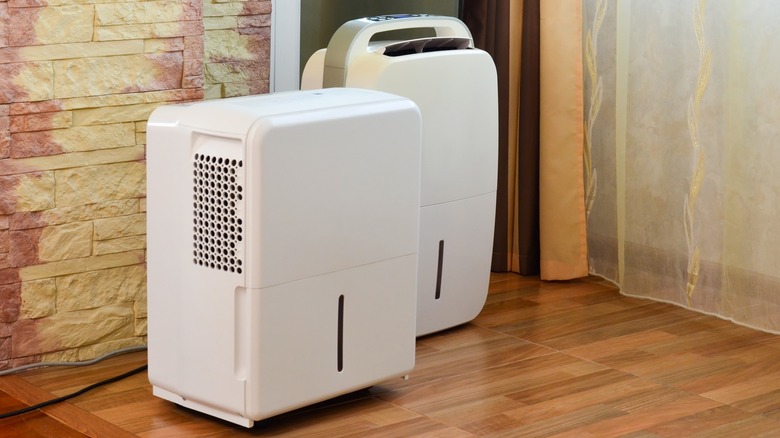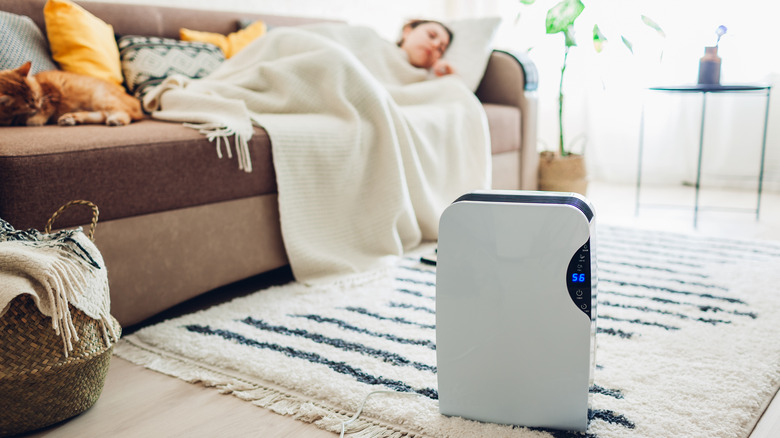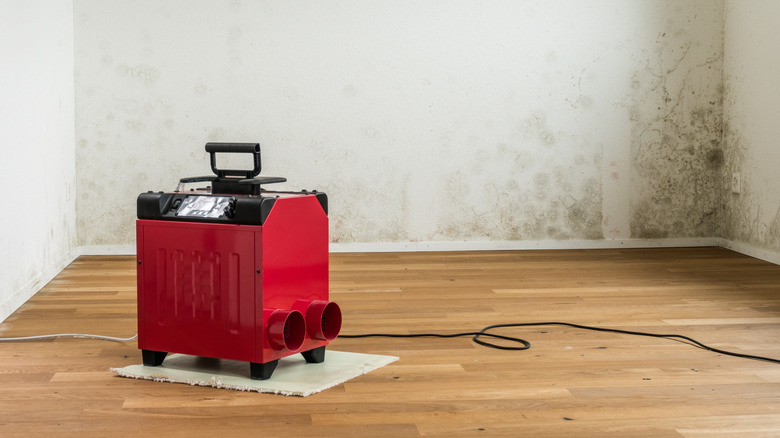5 Surefire Signs You Should Run A Dehumidifier In Your House
When it comes to humidity at home, both extremes are not ideal for comfort and also the general health and well-being of anyone living there. In fact, according to the Environmental Protection Agency, the ideal levels of humidity in most homes should be between 30-50%. With that said it's relatively easy to know when the humidity in your home is above the recommended levels. Maybe your cookies become damp shortly after opening the package or maybe you're constantly fighting bouts of sweat. If so, then you might be dealing with too much humidity in your house.
While these might be minor signs that might not affect your life in any major way, it's important to act first before the situation gets out of hand. When the level of humidity escalates to dangerous levels, you're at risk of suffering several other issues like allergies or even compromising indoor air quality.
A dehumidifier is a home appliance designed to help reduce excess moisture in the air and might be your saving grace when you can't just get comfortable in your home because of high humidity levels. So how do you know when you need to run a dehumidifier? Here are five telltale signs to watch out for.
1. Musty stale odor
The presence of a musty stale odor in your home is an almost sure sign of possible mold and/or mildew indoors. Mold and mildew thrive in damp environments and are often the main cause of this particular odor. Mold by itself is not harmful; however, when it grows, the spores are often associated with health complications. According to the Mayo Clinic, long exposure to mold and mildew can cause serious health effects, especially to anyone with severe allergic reactions. Some of the symptoms to watch out for include watery eyes, dry scaly skin, sneezing, and an itchy throat and eyes.
Once you notice the presence of mold in your home, the first thing you need to do is to get the molds removed permanently. You should realize that permanent mold removal requires the services of a professional, as they use special chemicals that are meant to destroy the mold spores completely. After the mold has been removed, go ahead and run a dehumidifier to remove the excess moisture and prevent the mold and mildew from growing again. This should also clear the musty odor from the house.
2. Condensation
Another sure sign that you might be dealing with excess moisture in your home is the evidence of water beads forming on surfaces like the window. It's common for some windows in your home to develop condensation when it rains; however, when this happens to every window even when there's no rainfall, you should be worried. Condensation is a result of excess moisture in warm air that turns to water droplets when it settles on cooler surfaces like concrete walls or against the window. If left unresolved, condensation might cause severe damage to the structure of a building.
According to EnviroVent, excess moisture could cause damage to a building's structure by eroding the exterior walls, loosening joints, or even causing staining and swelling of concrete walls. In such scenarios, dehumidification might help you a great deal in eliminating the excess moisture and keeping the levels of humidity within the acceptable range.
3. If you have a bigger HVAC than you need
Having the right HVAC size for your home is often understated. While it may sound like a good idea to have the biggest HVAC regardless of the size of the dwelling, the resultant effect might be the opposite of what you expect. Air Comfort explains that while a big HVAC system does a great job in regulating the room temperature, it does the opposite when it comes to removing humidity. Modern HVAC systems have evaporator coils that chill the moisture from the air. An oversized HVAC system on the other hand has powerful compressors that cool the air quite fast.
The resultant effect is that the indoor air will be cool but will feel heavy because of the excess moisture. Instead of replacing the entire system with a new one, a cheaper alternative that will also correct the problem is hooking up your unit with a dehumidifier. Not only will you feel much cooler, but you will also be more comfortable in your home.
4. Constant discomfort
Have you ever been in a situation where the room feels unusually hot despite the thermostat reading it's in comfortable mode? Well, this could be a result of high humidity. Elevated levels of humidity have a way of making the room feel hotter, especially during the hotter months. In fact, according to National Centers for Environmental Information, a 1 degree Fahrenheit increase in temperature directly translates to an air humidity level increase of about 4%, which explains why high levels of humidity would feel more uncomfortable during summer than winter.
Essentially, high humidity prevents the body from cooling effectively. Sweating, a natural process to cool the skin, doesn't evaporate effectively when the humidity is high, leaving the skin feeling sticky, which can be very uncomfortable. So if this is a situation that you are currently dealing with, running a dehumidifier might help to balance out the humidity in the air.
5. Water stains on the wall
There are plenty of reasons why you might have water stains or streaks on your wall and ceiling. It could be because of a leaking roof or a broken water pipe. However, if you are certain that these two causes have nothing to do with your wall's water stains or streaks, then you may be dealing with a case of elevated levels of humidity.
This is particularly common during the colder winter months when the indoor temperature is higher than the outdoor, therefore, moisture condenses on cold surfaces like the walls or the ceiling.
If you have noticed stains on your wall or ceiling, then that means the water is already there and you need to deal with it right away. Running a dehumidifier is one solution that will remove the excess moisture from the air. If left unchecked, high levels of humidity in a home can snowball into more serious problems like drywall damage, according to Ohio State Waterproofing.
